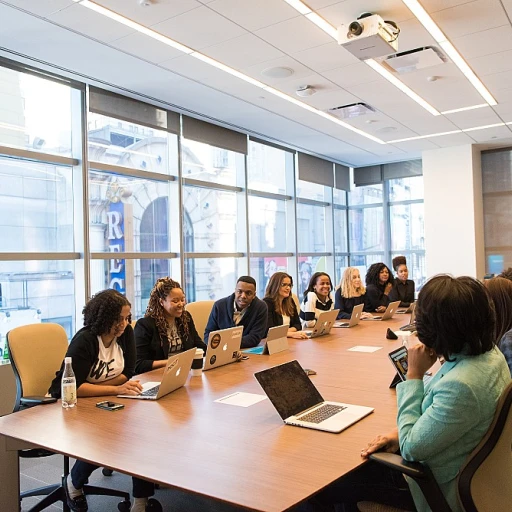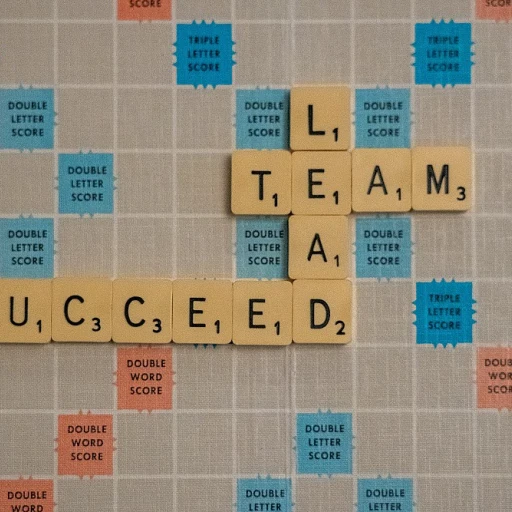
Understanding the Skills Gap
Defining the Skills Gap and Its Impact
In today's rapidly evolving professional landscape, recognizing the skills gap is crucial for organizations aiming to enhance performance and drive growth. This disparity between the skills employees currently possess and those required sets the stage for a multitude of challenges and opportunities. For both organizations and individuals, this gap presents a dual challenge: identifying areas for improvement while also seeking ways to elevate personal and professional development. Addressing these skills deficiencies is not a one-size-fits-all solution, but a process that requires ongoing support, guidance, and commitment to effective feedback and coaching. Employers must understand that skill development is not an isolated event but a continuous journey towards closing these critical gaps. By implementing the right performance improvement measures and offering coaching feedback tailored to individual needs, organizations can foster both employee growth and overall productivity. The disparity can be particularly pressing in sectors demanding rapid adaptation to new technologies, innovative business models, or evolving market demands. As such, feedback in the workplace acts as a pivotal tool for improvement, offering constructive input that helps individuals hone specific skills over time. What is essential is creating an environment conducive to growth and development, where conversations around coaching and guidance are regular parts of the professional ecosystem. For those eager to delve deeper into the complexities of this issue, learning from real-world applications and case studies can offer valuable insights. The significance of these elements becomes even more pronounced when integrating coaching into routine practices, ultimately narrowing the skills gap. Discover more about the role of a skills development facilitator and how they enable organizations and individuals to effectively bridge these critical gaps.Coaching: A Personalized Approach
Embracing a Tailored Guidance Approach
In the ever-evolving landscape of professional development, coaching has emerged as a transformative tool for bridging the skills gap. Unlike generic training programs, coaching provides a personalized approach, tailoring guidance to the specific needs of individuals. This process isn't just about imparting knowledge; it's about fostering long-term growth and improvement by addressing areas that need development.
Coaching centers around human connections, where the coach acts as a mentor, guiding employees through their personal and professional development journeys. The one-on-one nature of coaching ensures that employees receive the support and constructive feedback necessary for enhancing their performance. This hands-on involvement is crucial for specific skills enhancement and long-term performance improvement.
Effective coaching helps individuals recognize their capabilities and shortcomings, providing them a clear path toward skill development. It is a proactive process, encouraging open conversations and continuous learning. By creating a safe space for feedback, coaching feedback becomes a part of regular performance improvement discussions, helping employees understand their strengths and areas for improvement.
Best practices in coaching involve setting clear objectives, providing ongoing support and guidance, and ensuring alignment with the organization's goals. This ensures that employees not only improve their technical skills but also develop soft skills crucial for personal and professional growth.
The coaching process is not just about immediate improvements but facilitating long-term development. By engaging in feedback coaching, organizations can cultivate a culture of continuous development, empowering employees to thrive in their roles. To see how coaching fits into larger workplace strategies, consider how a workforce integration manager plays a role in bridging the gap.
Feedback: The Catalyst for Improvement
The Role of Crucial Assessment
Feedback plays a critical role in facilitating the continuous improvement of individual and organizational capabilities. In the workplace, effective feedback is the driving force behind employee performance improvement. Unlike other forms of communication, constructive feedback provides employees with specific insights into areas of improvement. It offers detailed evaluations that can serve as a roadmap for personal and professional development.
A Tool for Motivation and Accountability
The application of feedback in various forms—the one-on-one discussions as well as formal written evaluations—offers a significant push towards growth and development. This process allows employees to understand their current performance while highlighting areas where they can enhance their skills. Notably, this aspect of feedback hand-in-hand with coaching feedback can lead to substantial long-term benefits. Employees feel supported and motivated to take accountability for their progress.
Nuances of Providing Feedback
Incorporating best practices in feedback communication yields effective results. It's pivotal for managers to provide the support and guidance necessary for tangible employee growth. Employing a balanced approach—combining positive reinforcement with constructive criticism—can significantly improve performance.
A Framework for Continuous Support
Feedback establishes a loop of continuous communication and enhancement that is beneficial for both individuals and organizations. When coaching is integrated with feedback, it creates a holistic development framework that equips employees to face challenges, adapt to new roles, and emerge as leaders. To make the most of this dynamic combination, organizations should embed feedback into their coaching process, facilitating ongoing skill development and performance improvement.
Coaching vs Feedback: Key Differences
Key Distinctions Between Coaching and Feedback
In the realm of professional development and skills improvement, understanding the nuances between coaching and feedback is essential. Both play significant roles in supporting employees' personal and professional growth, yet they do so in distinct ways that cater to different needs within the workplace. Coaching is a personalized approach aimed at guiding individuals through a comprehensive development journey. A coach provides support and helps employees identify areas for improvement in their skills and performance. The coaching process involves long-term engagement, thoughtful conversations, and personal interaction, seeking to foster continuous growth and improvement. On the other hand, feedback tends to be more immediate and specific. It acts as a catalyst for performance improvement by highlighting current strengths and areas for improvement. Constructive feedback, when given effectively, can help individuals make targeted adjustments that lead to enhancement in specific tasks or situations. The differences between coaching and feedback can be summarized as follows:- Time Frame: Coaching has a long-term focus, while feedback is usually immediate and short-term.
- Scope: Coaching addresses broad development objectives; feedback typically targets particular actions or behaviors.
- Approach: Coaching is ongoing and supportive, focusing on overall skill development. Feedback, in contrast, is often direct and frequently linked to specific performance outcomes.
- Interaction: Coaching requires deeper personal interaction and commitment over time. Feedback is more transaction-oriented, delivering actionable insights for rapid change.
Integrating Coaching and Feedback
Combining Strategies for Optimal Development
To effectively bridge the skills gap, it's essential to integrate coaching and feedback seamlessly into the development strategies of organizations. These two elements, while distinct in their approaches, complement each other perfectly when applied synergistically.- Coaching as a Foundation: Coaching provides personalized support and guidance, helping individuals identify their specific areas of improvement. Through one-on-one conversations, a coach helps employees in their professional development by fostering a growth mindset and setting realistic goals that are aligned with the organization's objectives.
- Feedback as a Driver: Constructive feedback is the catalyst for performance improvement. It offers employees actionable insights into their strengths and areas of improvement. Effective feedback helps employees stay on course, enabling them to adapt their strategies and behaviors in real-time.
Real-World Applications and Success Stories
Success Stories: Real-World Impact of Coaching and Feedback
In the ever-evolving landscape of professional development, the integration of coaching and feedback has proven to be a powerful tool for bridging the skills gap. Organizations that have embraced these practices often witness significant improvements in employee performance and overall growth. Let's explore some real-world applications and success stories that highlight the effectiveness of these strategies.
Transforming Employee Performance
One company in the tech industry implemented a structured coaching process to address specific areas of improvement among its employees. By providing personalized support and guidance, the organization was able to help individuals enhance their skills and improve performance over time. The difference coaching made was evident as employees began to show marked improvement in their work quality and efficiency.
Feedback as a Catalyst for Growth
In another example, a financial services firm focused on delivering effective feedback in the workplace. By fostering open conversations and providing constructive feedback, the firm enabled its employees to identify areas for improvement and pursue targeted skill development. This approach not only improved individual performance but also contributed to the company's long-term success.
Integrating Coaching and Feedback for Maximum Impact
Some organizations have successfully combined coaching feedback to create a comprehensive development feedback system. This integration allows for continuous support and improvement, helping employees to achieve both personal and professional growth. By aligning coaching and feedback, these companies have established a culture of continuous learning and development.
Best Practices for Implementation
- Regularly schedule feedback sessions to provide timely and specific guidance.
- Ensure that coaching conversations are tailored to individual needs and goals.
- Encourage a culture of open communication to facilitate effective feedback.
- Invest in training coaches to enhance their ability to support employee development.
These success stories illustrate the transformative power of coaching and feedback in closing the skills gap. By adopting these best practices, organizations can foster a supportive environment that promotes continuous improvement and growth.












